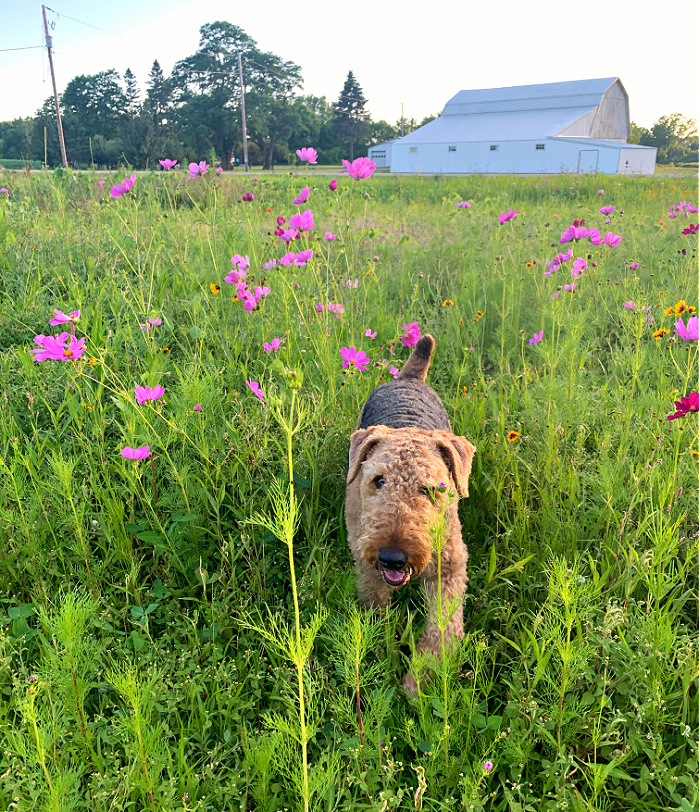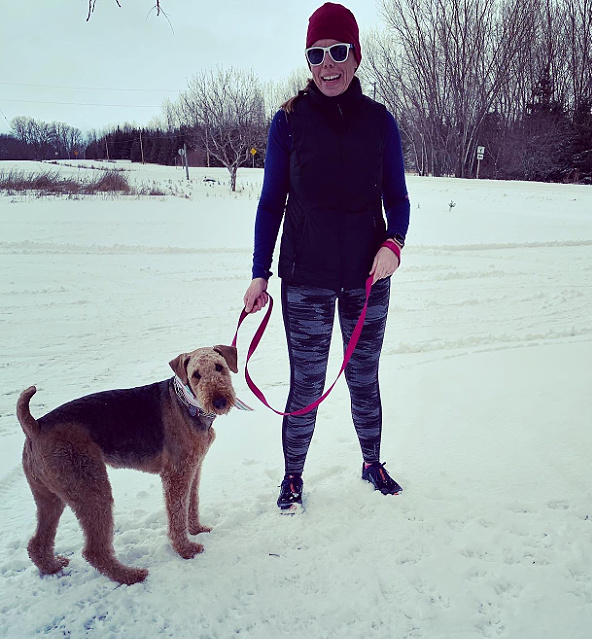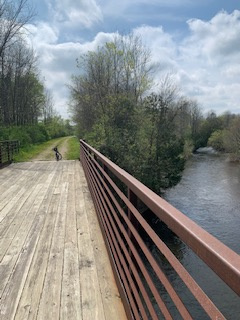A Step By Step Guide to Running with Your Dog
Dreaming of running with your new dog? A dog needs time and patience to be a great running companion. The benefits of running with a dog are endless, including increased sense of safety, companionship and exercise for both of you.
Where to Start?
First and foremost, if you are planning to start running with your new puppy there are a few things to consider. One thing that is a must prior to running with your dog, is getting a clean bill of health from your veterinarian. Another thing to consider is that you should not be running with your dog until their bone growth plates have closed, or you can risk serious damage to your dog. Your veterinarian can give you specific advice on when your puppy is old enough and it is safe to run.
Type of Dog
The type of dog you have will determine the type of runner they will be. Here’s a short list of some good running dogs; Australian cattle dogs, Weimaraner, Australian Shepard, German Shorthaired Pointers, Labs and Border Collies. A muzzle nosed dog such as a pug, is prone to overheating and can have difficulty breathing. Best bet is short runs in the yard for a pug. Take some time and research your dog breed. My dog Lucille is an Airedale Terrier and is full of energy!

Walk First
For a new dog, you need to train them to walk on a leash first. They must know how to heel and understand all the rules of the road prior to running. A leash and collar or a harness are good tools to start. Teaching them to walk properly on the leash will lead to excellent runs in the future. I love the new harness we are using! In combination with a leash it provides excellent control.
Be consistent with training. Pick one side that you will keep them on when you walk. I typically run on country roads and when we run, I run with my dog Lucille on my left side. With her running on my left side, I can easily move her into the ditch if a car decides to move too close to us while we are running. I also do not want her lunging into cars on my right side. The side of the road and the ditch are also cooler on her feet than the pavement on a hot day.
Running on trails or city streets can be more challenging. Always make sure that when you are training them to walk, that they become used to being around other dogs and people. The last thing you want your dog doing is being aggressive towards others, so get them used to walking around others. Once they have mastered walking on a leash, your dog can be moved to running.

Your First Run with Your Dog
Dogs are meant to run, however just like humans they need a couch to 5K program. Start out slowly and then build up distance. A run walk is a great start. Do not go too far when you start running with your dog, as just like humans you need time to build up the miles.
Tips for Success
When your running with your dog, watch your dogs subtle signals. Are they drifting behind you? Is their tongue hanging out or they are breathing heavier? These are signs they are tired, getting too hot or both. This means its time to stop or take a walking break. When its hot out, just like humans it is hard to run. The pavement is hot on there feet, so stick to soft terrain such as a trail or the grass. When the temps are high, this is the best day for your dog to take a rest day from running.
Another thing that dogs are good at is alerting you. Lucille is very good at alerting me of an animal, anything small she likes to try to chase. She sometimes gets is trouble for this one! She has a few times when running in Northern Wisconsin, become a bit difficult to handle on the leash tucking her tail, barking and pulling hard trying to get me to run fast. This was because we ran by a game trail where coyotes cross. She wanted no part of that. So, listen to what they are telling you.
Keep your dog hydrated. I always keep the water dish full at home, to keep her hydrated when we are not running. When out on run either carry water and a dish, or run short loops around your house. Give your pal water breaks at intervals. On long runs, I use my hydration pack and carry a collapsible bowl. This one fits in by pack perfectly.
How Far Can They Go?
The distance your dog will run depends on the type of dog, age of dog, temperament, the weather/season and your training. Some dogs are only meant to go short distances and some will go the distance. Slowly building up the distance is the key. Your running training plans will slowly increase in distance and this is perfect for running with your dog. Patience and consistency go a long way. Last winter while I trained for my first 50K race, Lucille trained right with me.
At first, I wasn’t sure how far she would go. Every long run she proved to me what a great companion she is. This summer she has maxed out at three miles. The heat is just to much and she tires out easily. So, I have kept her distances short. However, last winter she ran my longest run with me of 22 miles! My training plan was 24 weeks, so we slowly built up. It’s funny how they say you are like your dog. I would rather run when its cold out also, than when its 90 degrees. Great minds think alike! Will she ever run that distance again, I am not sure but it was a fun ride with my favorite running buddy!

Running with Your Dog for Life
Training your dog to be your running buddy has immense benefits for both of you. As a female runner, it has made me feel much safer to take Lucille with me versus being alone on the road. It is always nice to be out there with someone else.
Running with your dog keeps you both fit and healthy. Dogs need exercise just as much as humans do, and what a better way than to do that together. Keeping your dog on a regular running routine, will keep both of you happy! I love to hear dog stories, so let me know how many miles you are running with your best running friend!






[…] good running friends that loves to trail run too. We are always excited to run a new trail! Love to run with you dog? Find a human running friend that runs with her dog too, and all four of you can head out on the […]